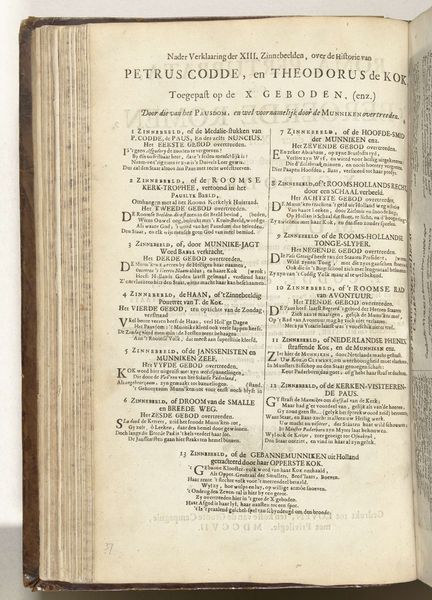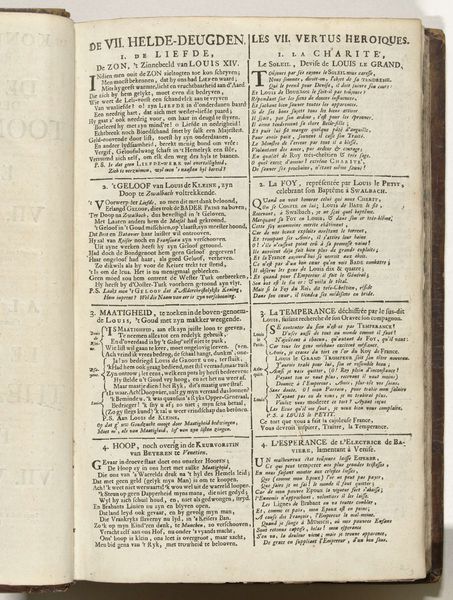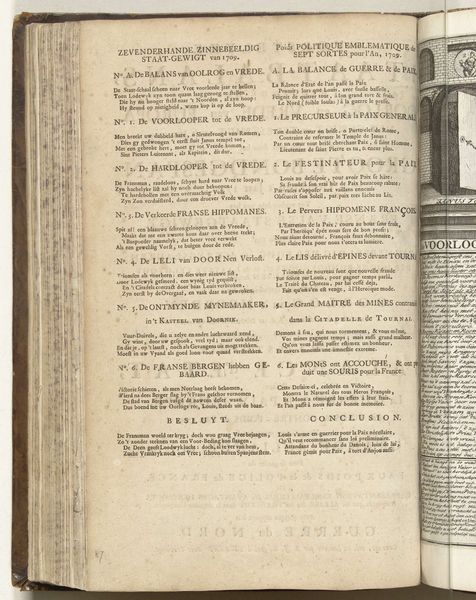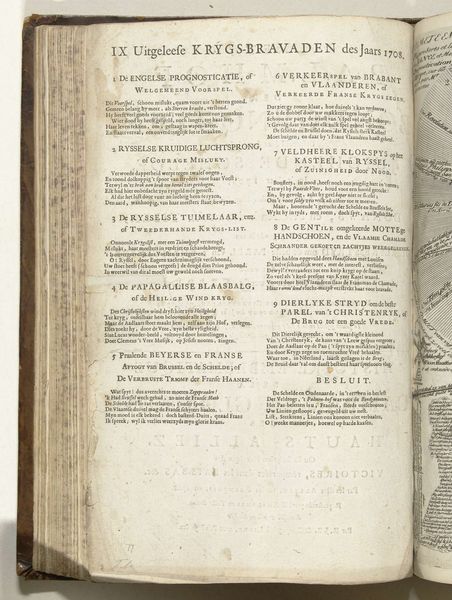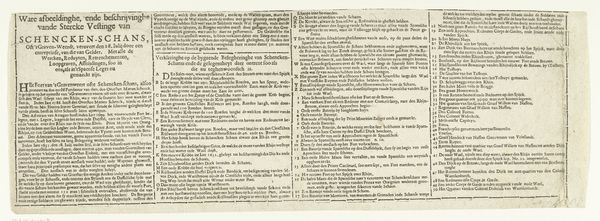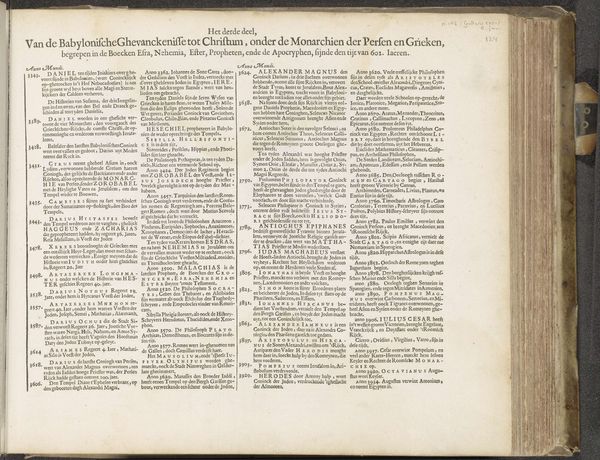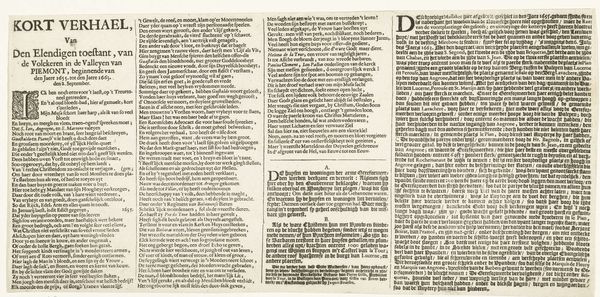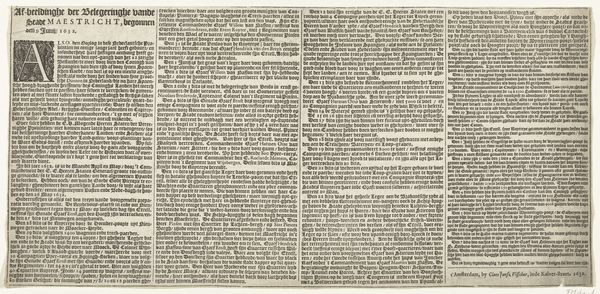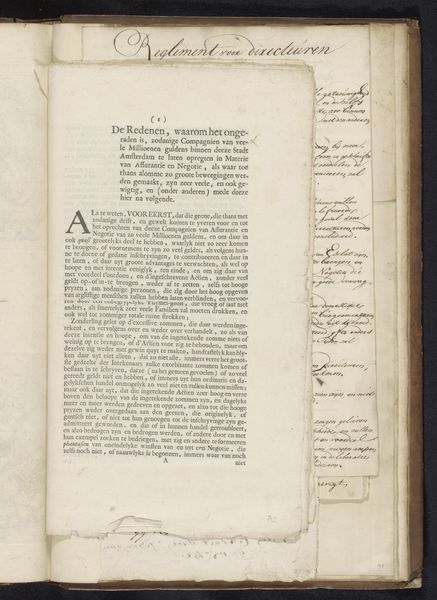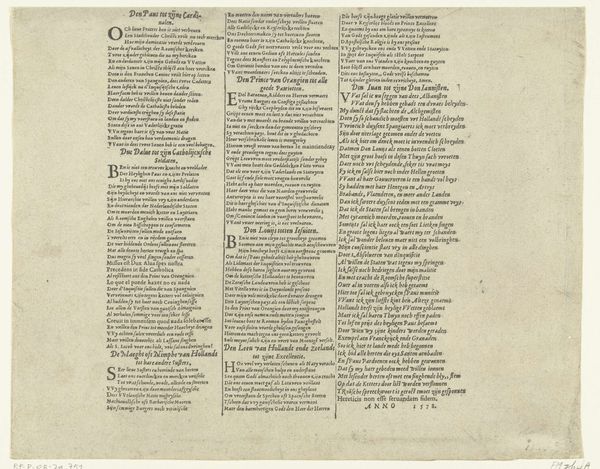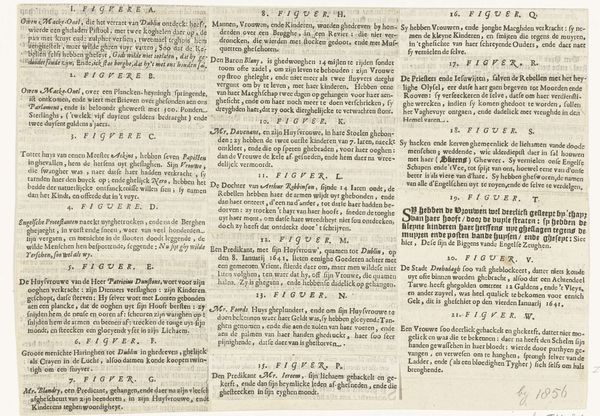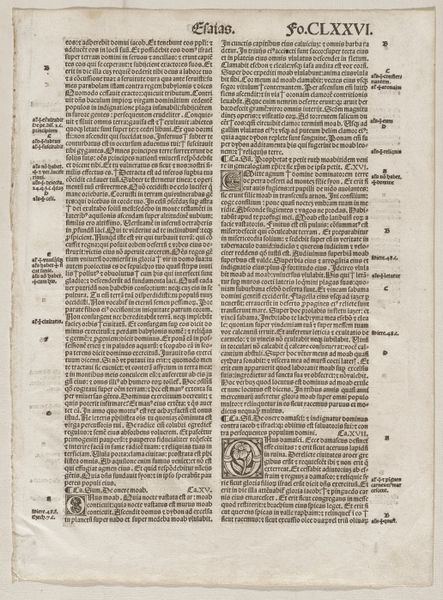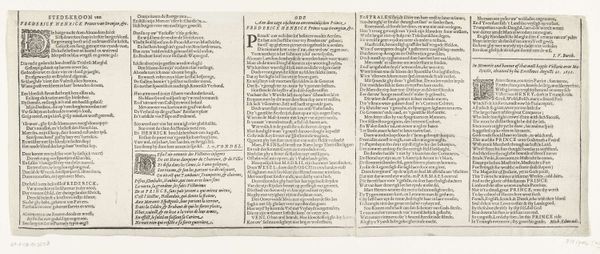
Inhoudsopgave voor de serie Byvoegsel tot de Koninglyke Almanach, genaamd het Gulde-Jaar der Bondgenooten, 1706 1706
0:00
0:00
carelallard
Rijksmuseum
print, textile, paper, typography
#
dutch-golden-age
# print
#
textile
#
paper
#
typography
Dimensions: height 315 mm, width 200 mm
Copyright: Rijks Museum: Open Domain
Curator: Let's discuss this fascinating document from 1706: "Inhoudsopgave voor de serie Byvoegsel tot de Koninglyke Almanach, genaamd het Gulde-Jaar der Bondgenooten." It's essentially a printed table of contents for an almanac, housed at the Rijksmuseum and created by Carel Allard. The materials listed are paper and it's filled with typography and what seems to be some textile work. Editor: My first impression? A page full of organized chaos! I am immediately struck by the contrast of the Dutch text versus French. The dense blocks of text seem intimidating. But also beautiful because of the age, giving it a unique feel with all the aging of the paper. Curator: Right, the Dutch Golden Age aesthetics are undeniable. But consider the broader context. This was printed during a period of intense political and military upheaval in Europe. These almanacs, including this table of contents, served as vital communication tools. Editor: I see what you mean. These "communication tools" were created with distinct purposes and the choices of medium, particularly printed typography, highlight their role in shaping public opinion through reproducible, affordable printed texts. Curator: Precisely. And Allard, the artist, likely employed assistants in his workshop. Think about the division of labor, the use of standardized typefaces, the very *process* of creating multiples of this print for mass distribution. The work encapsulates the material conditions of its time. Editor: Good point! It is also interesting how the very *public* function of such items as an almanac placed printed art like this within specific institutional and cultural flows of consumption. What did it mean to read this text then compared to now? How does the choice of language influence its political meaning in this time period? Curator: It is a window into a past society! A snapshot into the cultural fabric. To wrap up, viewing something so seemingly commonplace such as this almanac opens into discussions about media and production. Editor: For me, this almanac illuminates the complex interplay between social forces, institutions, artistic practices, and how these prints shaped historical moments for wider publics.
Comments
No comments
Be the first to comment and join the conversation on the ultimate creative platform.
